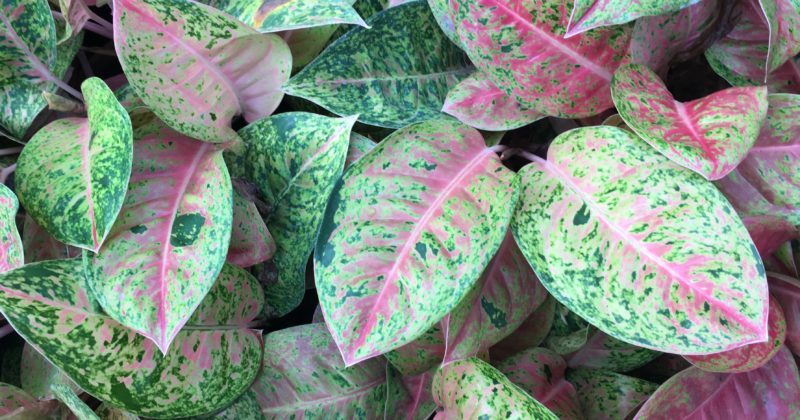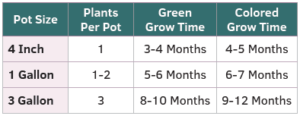
Let’s Talk Aglaonema
Aglaonemas, which originated from Asia and New Guinea, have typically been labeled as “Chinese Evergreens.” It is surprising that this name has stuck around now that there are so many versions of these that exhibit many different colors. Some of the biggest trends currently are with plants that show little to no green at all.
They have also been considered as a luck-bringing plant throughout Asia. I don’t know how much luck they truly bring, but I do feel lucky to have them in my collection. NASA has placed them on its Top 10 list of houseplants that clean the air. They have been shown to successfully remove both benzene and formaldehyde from the air.
TYPES
There are approximately 24 different species of aglaonema currently identified. For the most part, they are sold under their cultivar name instead of their botanical names. Some of my favorite cultivars are as follows:
‘Cutlass’
‘First Diamond’
‘Gemini Supreme’
Jazzed Gems Series
‘Juliette’
‘Dizzy Diamond’
‘Diamond Duke’
‘Emerald Eartha’
‘Etta Rose’
‘Garnet Coltrane’
‘Louis Lazuli’
‘Maria’
‘Moonstone Miles’
‘Romeo’
‘Ruby Ray’
‘Ruby Sunset’
‘Sapphire Suzanne’
‘Silver Bay’
‘Silver Queen’
‘Starlite Simone’
‘Wintry Winehouse’
GROWING AGLAONEMA
Aglaonema are typically propagated by cuttings. These cuttings are typically shoots coming from the base of the mother plant. The plants can also be developed from tissue culture and seed, but cuttings are the most popular propagule.
Production of aglaonema is typically done in 4-inch, 1-gallon and 3-gallon pots. In general, the colored aglaonemas will require a longer grow time than the
green varieties, although that can differ between the different cultivars.

Aglaonema grow naturally in the bottom layer of the rainforest, so they will need shade for production. The green varieties tend to handle sun better than the colored varieties, but it does differ between the cultivars. Typical shade levels are between 73 and 90 percent, resulting in light levels between 1,000 and 2,400 foot-candles.
Aglaonema should be planted in a soil mix that has excellent aeration. Plants that are in heavy, wet mixes are prone to rot. Consider using a peat/perlite or a
peat/coir mix.
Temperature levels are very important on this crop. The best growth for them will be when their soil and air temperatures are between 70 and 85° F.
If the soil temperature drops below 65° F, growth will come to a crawl and stop as the temperature drops lower. Make sure that the air temperature is always maintained above 55° F as chill burn can occur. As with the grow times, there is a difference between the green and the colored aglaonema with a little more resistance to cold for the green cultivars.
Aglaonemas can be very sensitive to higher salt levels, causing tip burn on the leaves as well as root burn. They are far better off receiving more frequent, yet lower EC levels of feed. In general, they prefer a feed with a ratio of 3-1-2. Be sure to watch your copper levels in the tissue as deficiency can be a problem.
Unfortunately, aglaonemas can be susceptible to both bacterial and fungal issues. A good monitoring and spray rotation can keep them clean. The most common bacterial issues for them are Erwinia and Xanthamonas. The
most common fungal issues are Fusarium, Colletortichum, Myrothecium and Pythium.
These beautiful plants are also attractors of insects as well. It seems we aren’t the only ones that love them! The most common issues on aglaonemas are mealybugs, but it is possible to occasionally see scale as well.
SUMMARY
Although they can initially seem to be a challenging plant to grow, proper monitoring can make them simple. They are an incredible foliage plant that can survive indoors for a long period of time. The popularity of them has grown from 1 percent of the foliage production in the 1960s to over 6 percent currently. There are many more interesting cultivars being developed as we speak. I anticipate seeing them in the “new products” section of our trade shows every year.


 Video Library
Video Library 




















